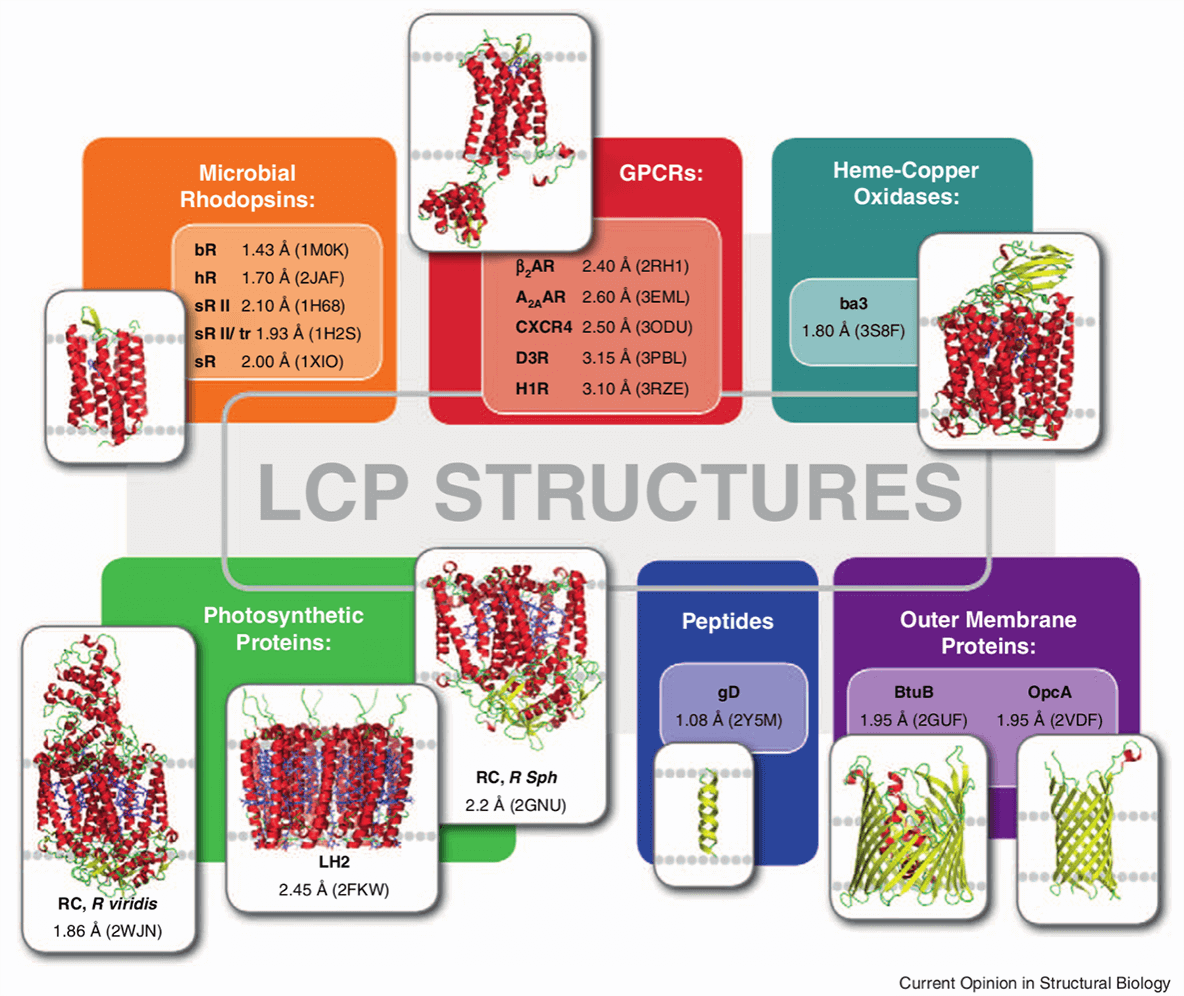Lipidic Cubic Phase (LCP) Crystallization
Creative Biostructure offers from the single package to the full range of membrane protein service, starting from DNA cloning to the determination of protein structure . Collaborating with academic organizations, we have optimized Lipidic Cubic Phase (LCP) crystallization method to increase the speed and chance of success.
LCP crystallization is the most commonly used method for membrane protein structure determination. It has a membrane-mimetic matrix suitable for stabilization and crystallization of membrane proteins in lipidic environment. Recent advances in pre-crystallization assays, improvement in crystal imaging, and commercial availability of LCP instruments greatly attract the attention of structural biologists. LCP crystallization method has evolved over the years from using small glass test tubes and mixing lipid with protein solution by centrifugation to faster and more efficient way of mixing LCP with syringe mixer and setting up crystallization trials in 96-well plates. Consumption of protein and lipid per crystallization trial has been reduced by over 100-fold, and the whole process becomes as easy as setting up vapor diffusion trays.

Figure 1. A gallery of protein and peptide structures obtained by LCP
crystallization.
To improve the detection efficiency of initial microcrystals in LCP, our scientists uses trace labeling technology to attach fluorescent dyes to protein molecules. We also have improved a novel method of protein crystal detection, termed SONICC (Second Order Nonlinear Imaging of Chiral Crystals), which is devoid of many drawbacks associated with other imaging techniques. This method relies on two-photon scattering, which gives virtually no background scattering from randomly oriented molecules, but produces a strong signal from chiral molecules arranged in crystals.
Emerging microfluidics approaches capable of handling LCP and other viscous lipidic mesophases will mature and will likely represent the next major step in minimizing the consumption of valuable protein material and may allow for integration of different steps, such as cell-free expression , purification and crystallization, in a single LCP-lab-on-a-chip. Using this technique, Creative Biostructure offers the highest-quality crystallographic screening for membrane proteins with largely increased success rate. We also offer subsequent crystal optimization, crystal handling and data collection, which are known to be very difficult in LCP system.
Please feel free to contact us for a detailed quote.
Ordering process
Reference s
- Caffrey M. (2015) “A comprehensive review of the lipid cubic phase or in meso method for crystallizing membrane and soluble proteins and complexes”. Acta Cryst F71:3–18.
- Cherezov V. (2011) “Lipidic cubic phase technologies for membrane protein structural studies”. Curr Opin Struct Biol 21(4):559–566.
- Landau EM, Rosenbusch JP. (1996) “Lipidic cubic phases: a novel concept for the crystallization of membrane proteins”. Proc Natl Acad Sci U S A 93(25):14532-14535.

